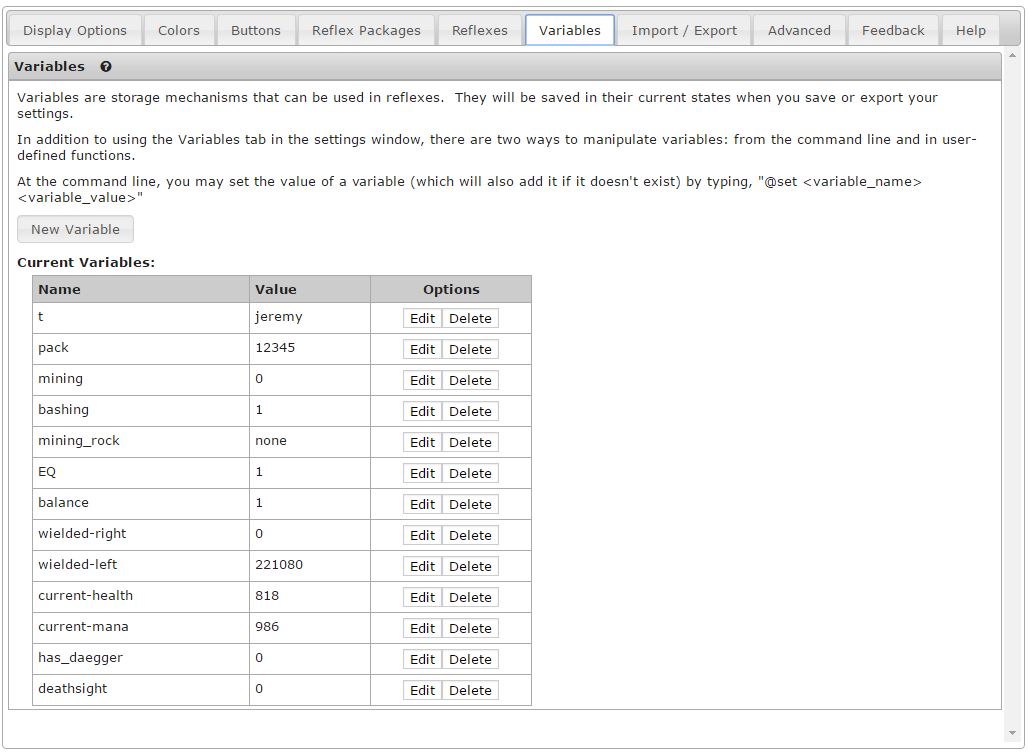Variables: Difference between revisions
From Iron Realms Nexus Client Documentation
No edit summary |
No edit summary |
||
| Line 2: | Line 2: | ||
Once a variable is set, you can refer to it in aliases and direct command using @name. For example, you could easily make a simple targetting system by creating an alias with Alias text set to t and the Command set to @set t. Then, you would create a separate alias for each attack that you wish to use - for example, an alias with text fl and command cast firelash at @t. With this setup, you could then simply enter t orc to target an orc, and fl to cast firelash at it. Much easier than having to type it all the time by hand! | Once a variable is set, you can refer to it in aliases and direct command using @name. For example, you could easily make a simple targetting system by creating an alias with Alias text set to t and the Command set to @set t. Then, you would create a separate alias for each attack that you wish to use - for example, an alias with text fl and command cast firelash at @t. With this setup, you could then simply enter t orc to target an orc, and fl to cast firelash at it. Much easier than having to type it all the time by hand! | ||
There may be times when you'll want to use the contents of a variable appended. In cases like this, you may use @{variablename}<rest of your text>. For example, if you have a variable called @him, which is either "him" or "her" and want to use that as par of "himself" or "herself", you can use @{him}self. | |||
Variables can also be set in the settings interface, on the Variables panel. | Variables can also be set in the settings interface, on the Variables panel. | ||
Revision as of 22:51, 24 February 2016
Variables are storage containers that can hold text, numbers, or other values. For example, you could use variables to store your currently attacked target, the item number of your pack, or anything else. To set a variable, use the following command on the command line or in an alias: @set name value. For example, @set target orc.
Once a variable is set, you can refer to it in aliases and direct command using @name. For example, you could easily make a simple targetting system by creating an alias with Alias text set to t and the Command set to @set t. Then, you would create a separate alias for each attack that you wish to use - for example, an alias with text fl and command cast firelash at @t. With this setup, you could then simply enter t orc to target an orc, and fl to cast firelash at it. Much easier than having to type it all the time by hand!
There may be times when you'll want to use the contents of a variable appended. In cases like this, you may use @{variablename}<rest of your text>. For example, if you have a variable called @him, which is either "him" or "her" and want to use that as par of "himself" or "herself", you can use @{him}self.
Variables can also be set in the settings interface, on the Variables panel.
Examples
Basic Targeting Alias: These aliases use variables to target and attack mobiles.
